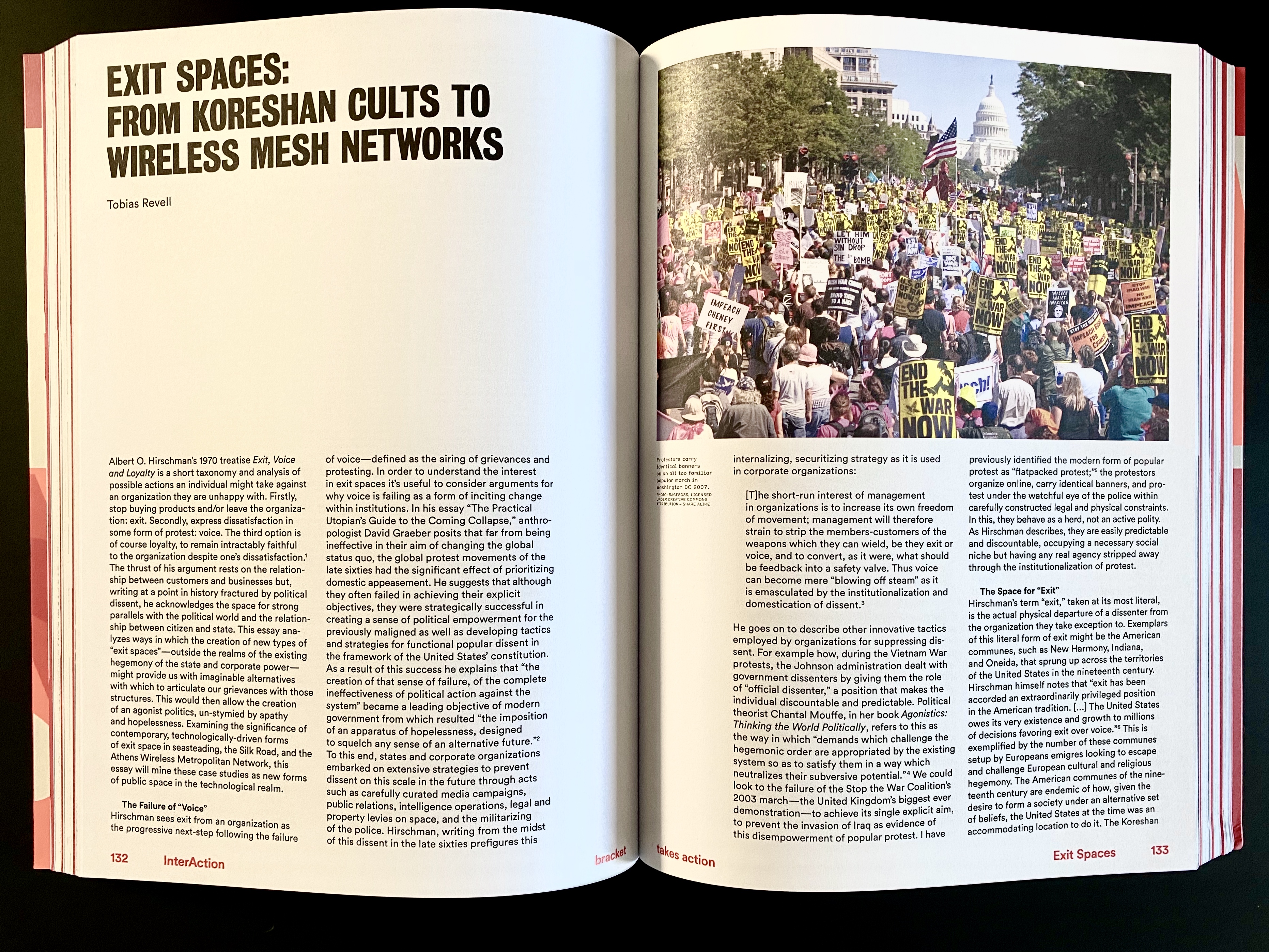Exit Spaces: From Koreshan Cults to Wireless Mesh Networks – Bracket: Takes Action – 2020-08
An essay for Bracket journal drawing on the work of political economist Albert O. Hirschmann to speculate on the possibility of ‘exit spaces’ enabled by networked technology to exist outside of state or corporate oversight and control. The essay explores the history of these spaces from the Koreshan commune, to Occupy, Seasteading, and the opportunity for them to exist digitally in forms such as mesh networks.
Hirschman’s term “exit”, taken at its most literal, is the actual physical departure of a dissenter from the organization they take exception to. Exemplars of this literal form of exit might be the American communes, such as New Harmony, Indiana and Oneida, New York, that sprung up across the territories of the US in the nineteenth century. Hirschman himself notes that “exit has been accorded an extraordinarily privileged position in the American tradition. […] The United States owes its very existence and growth to millions of decisions favoring exit over voice.” This is exemplified by the number of these communes setup by Europeans emigres looking to escape and challenge European cultural and religious hegemony.
The American communes of the 19th century are endemic of how, given the desire to form a society under an alternative set of beliefs, the US at the time was an accommodating place to do it. The Koreshan Unity movement provides a case study of the process and reasoning of these communal exits. Following altercations with the Chicago authorities, the Koreshans, led by Cyrus Teed, decided to settle in rural southern Florida in 1894. They believed that the universe existed inside a giant sphere (and tried to prove it), and had a host of unhelpful social policies for a growing community, such as mandatory celibacy.
Despite this, they were incredibly successful as historian Robert S. Fogarty remarks, counting almost 200 followers at their height: “Remarkably enough the colonists succeeded in constructing and sustaining a community until Teed's death in 1908. After his death the colonists waited for him to rise from the dead and when that failed to occur the two hundred members split into warring factions.”
...
Hirschman, even writing in the midst of the political dissent of the late 1960’s was aware of the imminent failure of voice; of the institutionalisation of protest and the securitisation of public space in which to perform it. At the same time, the totalising global hegemony of political institutions shaped during the Cold War saw the Koreshans and the American communes as some of the last attempts at practicing the imaginable alternative in the US and perhaps the developed world.
Now, with network technologies, used by communities in a new way, we’re maybe beginning to glimpse an alternative definition for exit. One where, the physical movement of a disgruntled polity across the Earth is not necessary, when political space can be carved out from the networked society.
The journal features almost 50 pieces by a range of researchers and practitioners and is available for purchase from Amazon and other booksellers.

